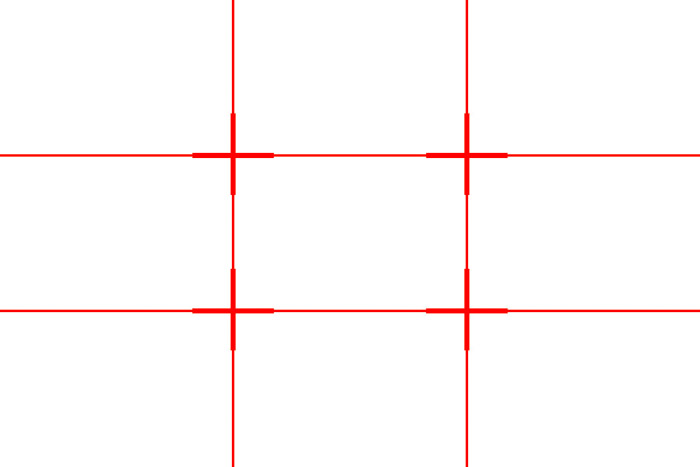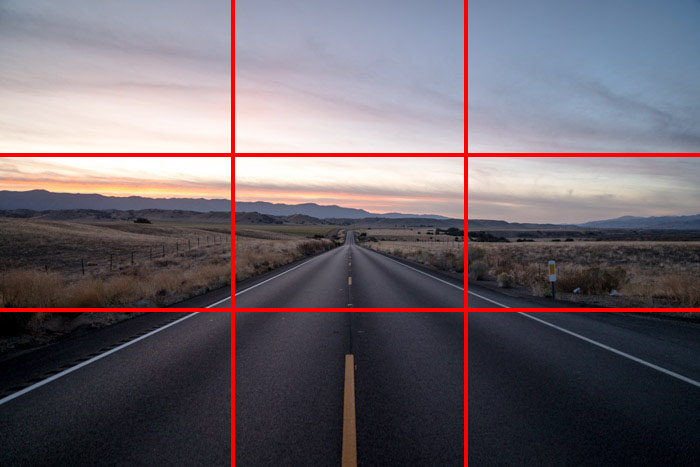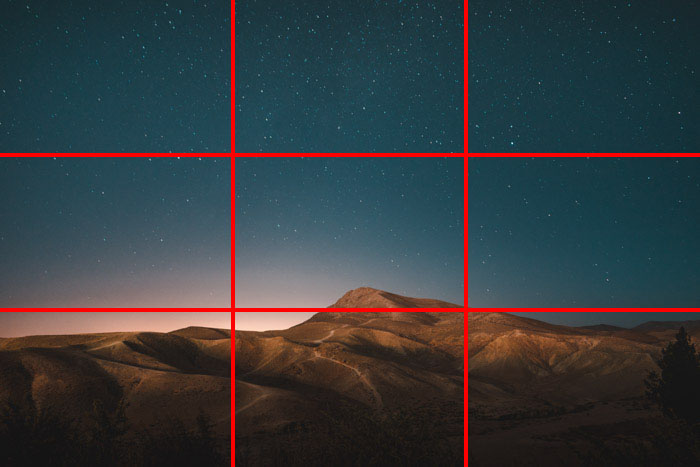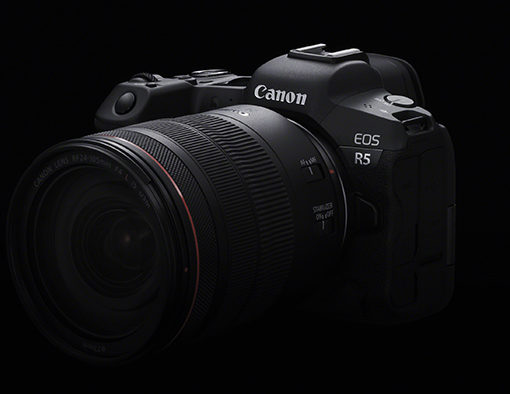Improve Your Composition With the Rule of Thirds
 By JOSH
By JOSH
You may have heard of the rule of thirds in photography, but do you know exactly what it is and how it can help you? Taking great images doesn’t just come down to your lenses, and certainly not to your camera.
Although these help immensely, they are not working alone. You need a great eye, technical skill and practise behind you. Composition is one of the most important and basic tools for your photography. It helps to make your images interesting and stand out from the crowd.
Basically, a composition is how you arrange the subject and objects within your frame. You do this from your camera’s perspective. The compositional tool we are covering today is the rule of thirds.
You will find most modern DSLRs and mirrorless systems have an option to set this on the LCD screen. This will help you photograph with this idea in mind.

What Is the Rule of Thirds?
The rule of thirds is one of the basic compositional tools at your disposal, and one of the easiest to master.
Basically, you are breaking your photograph into thirds, both horizontally and vertically. This will leave you with 9 equal rectangles, as you can see below.
You can do this using your mind, or you can change the setting in on your digital camera. The lines will show your scene, but they won’t be part of your image when you photograph a scene.

This grid will provide you with four intersections. These areas are where you should consider putting the points of interest when you take the picture.
Points of Interest
An image with one or a few specific points of interest can really benefit from a rule of thirds composition.
For example, an image such as this photo below shows the subject on the lower-left intersection.

You can see this better with the rule of thirds grid as a reference placed over the image.

The same goes for landscapes. This is where we can see the most prominent point-of-interest on the intersection.

The rule of thirds grid shows this idea better. The boat falls on the lower-left intersection and the mountain on the upper-right.

The theory is that points of interest placed in these intersections help your photo become more balanced. It creates more tension, energy and interest than simply centering the subject or object.
Conducted studies show that the viewer’s eyes will naturally fall to these points in an image subconsciously. Your image instantly becomes more dramatic.
Elements
The same idea goes for images where the landscape is the subject, and there isn’t one specific point of reference.
Here you have 4 lines that help you to arrange these elements in your frame, from the scene you are capturing.
For example, take this image of a landscape/road scene.

This image isn’t very dynamic as you can see the horizon is directly in the middle of the frame. You can see this better by using the rule of thirds grid.

For images of landscapes, seascapes and cityscapes, it is better to work from the idea of 1/3 and 2/3. Luckily, this grid gives you that from the horizontal and vertical lines.
This image below is more interesting because the landscape takes up 1/3 of the image, where the sky takes the remaining 2/3.
This idea is a great way to show two elements where one has more importance over the other. This image would not be as dynamic if the sky was only 1/3.

Breaking the Rule of Thirds
The rule of thirds is the most basic yet fundamental composition tool to use. Because of this, this is the first compositional tool beginner photographers try to obtain, and it can be overused and abused.
You can read more about the most common abused rules of compostion here.
Of course, rules can be broken, but it is better to learn the rule first. This way, when you do break it, your choices are more effective and on purpose.
Take this image, for example. It neither follows the points of interest falling on any of the intersections, or the 1/3 and 2/3 breakdown.
This image did win Coco Amerdeil 2nd place in the 2017 Lens Culture portrait Award.

Coco Amardeil
Here, the composition is overshadowed by the powerfulness of the scene and the concept behind the image and the created series.
The concept of an image and the content will always take precedence over composition. Composition is there to help you boost your images, and make them more interesting if the content is lacking.
Post-Processing
One area that the rule of thirds can help you is during the post-processing stage of your workflow.
By using software such as Lightroom or Photoshop, you may find that you would like to crop your images. This may be due to distracting subjects or backgrounds.
You may even find that a tighter crop places more importance on your photographed scene.
The rule of thirds grid can help you achieve a better crop, and thus, a stronger image.
In Lightroom, pressing the ‘R‘ on your keyboard will toggle the helpful rule of thirds grid on your image. Or, clicking on the crop tool will also activate this overlay.

You can use this to crop your image so that subjects fall on these intersections better.
For Photoshop, there is no simple command, but you can make your own by using guides, found in View>New Guide.
Your Free Quick-Start Photography Cheatsheet
In order to simplify the process of learning photography, I’ve created a free download called The Quick Start Photography Cheatsheet and you can download it below.
Here’s what you’ll get:
- A downloadable cheatsheet to carry with you as you shoot
- Detailed summaries of each section of this post
- External links to relevant articles and blog posts
- At-A-Glace Images that will explain how each exposure works
- And much, much more…
If you want even more tips on how to use the rule of thirds to improve your composition, check out our rule of thirds tips from our 30 day photography challenge project or watch our tutorial video below.
– Originally posted on Expert Photography





4 thoughts on “Improve Your Composition With the Rule of Thirds”
People nolamlry pay me for this and you are giving it away!
I have to express appreciation to you for rescuing me from this particular matter. As a result of surfing through the world-wide-web and getting notions which were not powerful, I believed my entire life was done. Being alive without the strategies to the issues you’ve fixed through the write-up is a crucial case, and ones which could have in a wrong way affected my entire career if I hadn’t noticed your web site. Your actual mastery and kindness in dealing with every item was helpful. I don’t know what I would’ve done if I had not come across such a thing like this. It’s possible to at this moment look ahead to my future. Thanks a lot so much for your expert and result oriented guide. I won’t hesitate to refer your web blog to anybody who would like guidelines about this matter.
Nice article, thank you for this post
Hi,
great article but I just wanted to let you know that you have a tiny typo under the Rule of thirds chapter. “Composition” is missing an “i” 🙂
While we’re at that, would you be interested in mentioning the Rule of thirds that I wrote about here( Rule of thirds tutorial)? I’d love to write a few sentences for you, to help you better connect the text.
Anyway, have a great day.
Cheers,
Matic